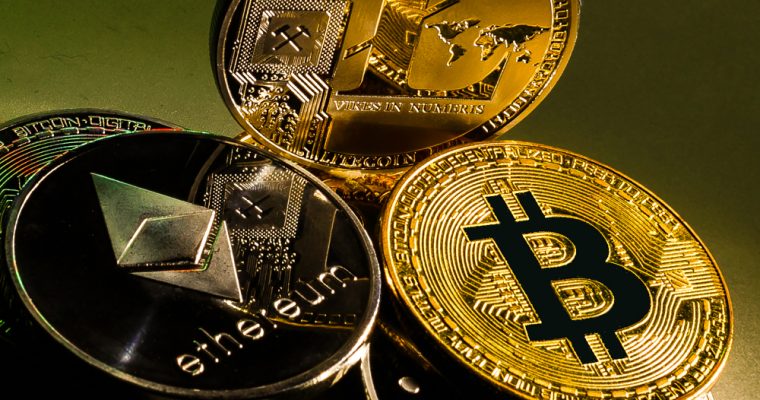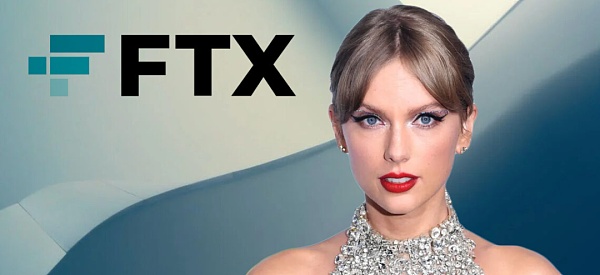What does De in DeFi mean and what does it mean for the blockchain industry?
Author | Oscar W
Translation | Huohuo Sauce
Production | Blockchain Base Camp
The concept of blockchain was first proposed by Stuart Haber and Scott Stornetta in 1991. Until 2008, Nakamoto Satoshi conceptualized the first blockchain and created Bitcoin. Since then, countless projects have emerged, hoping to revolutionize the field of blockchain.
- Bitcoin fell below $ 9,200, and the entire network was over $ 300 million in short positions. Is the halving quotation not over yet?
- Over 43% of Ethereum addresses are profitable, and researchers are optimistic that Ethereum will become a new hedge
- Comprehensive interpretation: What is the impact and value of the US SEC Commissioner's "Token Safe Harbor Proposal"?
However, it was not until 2015 that a genius named Vitalik Buterin (V God) created Ethereum, which was a crucial step in change. Ethereum implements a Turing-complete language that allows programming on the blockchain (known as smart contracts), which opens up new possibilities for us.
Smart contracts allow projects and individuals to issue tokens and raise funds, namely ICOs and STOs. Raising funds through cryptocurrencies is the main reason why the crypto market's market value soared to $ 815 billion in 2018.
However, due to tightening regulations by governments, the market value of cryptocurrencies has fallen by 85% since then. The emergence of DeFi is the next key we must grasp. It brings new hope to the blockchain field.
What is DeFi?
DeFi, short for decentralized finance, aims to rebuild traditional banking services without a centralized entity-savings, loans, transactions, insurance, etc.
Its goal is to provide an open alternative for anyone with an Internet connection in the world.
However, it is more suitable to be called "distributed finance" or "open finance" because most DeFi products and services are currently a centralized and decentralized combination.
DeFi-the second breakthrough in blockchain history
As the first breakthrough of the widely recognized blockchain, Bitcoin combines a lot of knowledge of cryptography , consensus mechanisms , peer-to-peer networks, and incentive mechanisms .
Bitcoin has become a means of value storage, enabling value transfer without the participation of third parties.
DeFi can be seen as the second breakthrough. Although it is not as disruptive as Bitcoin, DeFi has already begun to take shape and has shown its potential.
Why is DeFi the second breakthrough?
To understand DeFi, you must first understand why it exists.
DeFi exists because it can meet the financial needs of some people, and these financial needs cannot be met by the traditional financial system.
DeFi's goal is to build a transparent financial system. The system is open to everyone, requires no license, and does not rely on third-party institutions to meet financial needs. Such as loans, transactions, payments, and various derivatives.
DeFi is open finance that leverages the blockchain infrastructure . With the blockchain, one can verify every transaction performed on it, which at the same time brings transaction transparency.

DeFi is a special challenge
The generation of money is a spontaneous process, which is inevitable in the process of human evolution. At first, people exchanged goods for goods, forming a barter. However, bartering is very inefficient because it is difficult to find two people who happen to have matching items.
It is difficult for a fisherman who needs shoes and a shoemaker who needs food to reach an agreement. Even if the needs match, it is difficult to determine how many fish to use for a pair of shoes.
Therefore, a demand for money emerged. People need a currency system to exchange between different items. This currency became an intermediate medium of exchange and also had storage value.
Throughout human history, there have been various currencies, from shells, precious metals, gold, to fiat currencies as we call them today.

Then came intermediaries like commercial banks, investment banks, stockbrokers, pooled investment funds and stock exchanges.
These intermediaries have improved market efficiency and achieved better resource allocation. But at the same time, the existence of intermediary institutions has also caused problems such as opacity, which often leads to excessive debt or hyperinflation.
In the current financial structure dominated by financial intermediaries, the economic crisis seems inevitable and history has been repeating itself.
The core value of the blockchain is transparency and distribution, and it is the best medium to change the status quo of the financial structure. This is why DeFi exists.
DeFi is similar to traditional finance
Like traditional finance, DeFi allows everyone to invest funds into different assets based on their needs. Through a variety of different assets, contracts and agreements, new projects can be combined to provide users with new products and services. For example Compound.
cDai itself is also a token, which means that cDai can be circulated on the market and holders can also profit from it. For example, users can trade cDai with ETH, hold cDai through Dex such as Uniswap, and get interest on cDai tokens.
In addition, it can also be used in other smart contracts, such as MakerDAO mortgages ETH or BAT to generate Dai tokens, and places Dai into Compound to generate cDai, which can then be exchanged with other tokens on Uniswap.
DeFi is a new world parallel to traditional finance
Traditional finance has won the trust of many people through intermediaries and their services. It can meet the needs of many people in the real world, but the service is the same for everyone.
However, some people want to control their financial situation. To serve these people, DeFi is building a world parallel to traditional finance.
For example, Compound, Dharma, Maker, etc. are providing lending services for cryptocurrency assets, which can be regarded as an encrypted version of traditional banks. Projects like Uniswap, Kyber, and Bancor provide asset exchange services similar to Nasdaq, the New York Stock Exchange (NYSE), and other exchanges in the traditional financial world.

DeFi is more than a world parallel to traditional finance
DeFi not only mimics traditional finance in the crypto world, but also offers new features. It provides instant transaction services through a pool of funds, which may take 3 to 5 days to complete in traditional intermediaries. DeFi can also adjust the loan interest rate in real time without the traditional loan grace period.
The borrowing income of users is reflected by their tokens. If users purchase tokens, they can actually enjoy the borrowing income of tokens, which is equivalent to tokenizing the creditor's rights and realizing circulation.
DeFi has greatly accelerated the liquidity of assets. Its "license-free" and "transparent" characteristics cannot be achieved by traditional finance.
When participating in the DeFi service, users will interact with a series of smart contracts on the blockchain.
One can take advantage of its transparency and license-free features, such as obtaining the best price transactions through DEX aggregation, and the best way is to aggregate interest income through loan agreements.
From a borrowing perspective, current borrowing needs require excessive mortgages to borrow. And all the borrowing and settlement procedures in DeFi are enforced through agreements, so there is no need to worry about defaults and no third party intervention.
At the same time, owing to the elimination of intermediaries, lenders can earn higher income and borrowers can get better interest rates.
DeFi and traditional financial integration
At present, not everyone has the ability and willingness to learn and manage crypto assets. So it is more likely that DeFi will integrate with traditional finance.
Traditional finance can use the characteristics of DeFi to achieve liquidity, and DeFi can use the assets and compliance of traditional finance to achieve scale expansion.
USDC is an example of a combination of DeFi and traditional finance. USDC inputs traditional world currencies into DeFi to form stable coins, and then uses DeFi's license-free, fast circulation, transparency and other features to play a role.
Traditional financial demand has its historical inertia. From today's perspective, it is difficult for DeFi to expand without the participation of traditional finance. Although this is not what many idealists and geeks want to see, in the real world, DeFi can help traditional finance achieve faster asset flows through the blockchain.
DeFi is 100% decentralized finance
Anyone who owns crypto assets can participate in DeFi. These are usually completed through on-chain operations, and do not require the participation of third parties. Users have a great degree of participation freedom, which is convenient and fast.
However, any DeFi service has a certain degree of centralization. For example, Dai is not 100% decentralized. Its security requires the governance of MKR token holders and the need to prevent attacks on its oracles, all of which need to be centralized to a certain degree to maintain its security.
This will become more apparent as real-world assets circulate on DeFi. For example, if you bought 100% of the house tokens. Housing in the real world involves a lot of legal rights and obligations, so you can't automatically obtain all the benefits by only tokenly transferring tokens, these need to follow traditional laws and processes.
The future of DeFi
At present, through DeFi, people can implement loans, transactions, payments, futures and other functions, but for most ordinary users who do not have the experience of using crypto wallets, there are certain thresholds. It requires users to have certain asset management capabilities and experience.
However, as more and more DeFi projects have simplified their operations, they have become more convenient to use. When people use DeFi products, the difficulty of use will gradually decrease. Once the habit is formed, more and more people will enter the field of DeFi.
We will continue to update Blocking; if you have any questions or suggestions, please contact us!
Was this article helpful?
93 out of 132 found this helpful
Related articles
- Why is FileCoin delayed again?
- Winklevoss brothers support Filecoin, how long will it take us to raise $ 257 million?
- QKL123 market analysis | At the tip of the iceberg of crypto assets, Hurun's wealth list ranks sixth (0226)
- Babbitt original 丨 Ethereum miners' life and death situation: 4G graphics card mining machine may annihilate the entire army in the fourth quarter!
- Swiss exchange SIX announces investment in cryptocurrency trading platform Omniex, exact amount not disclosed
- New Zealand: IRD proposes to waive taxes on some cryptocurrencies to boost industry development
- Filecoin Interoperability Network is coming online. Do you know it?






